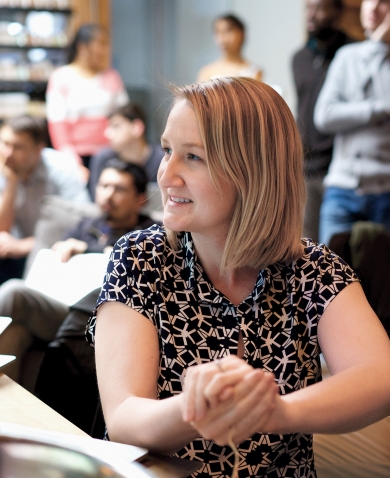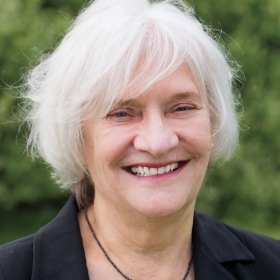As a child, Jen Carlile would sometimes tag along with her father through the winding suburban subdivisions where he built homes, exploring the skeletons of half-built houses as he ran through punch lists. They started having “interesting discussions” as she got older: “I would argue that he wasn’t really doing architecture any favors by building the same five houses over and over again,” she says. He would counter that he was building American dream homes for blue-collar families. The debates grew more heated when she became a teenager. These days, after a few surprising twists of the sort life likes to pull, Jen loves to talk construction with her father: She is cofounder of Flux, which aims to radically upend the quality and cost of the built environment worldwide.
Flux is a spinoff from X, a research-and-development “moonshot factory” founded by Google. The idea behind X is to apply the transformative power of science and technology to “big, hairy, audacious goals,” as X’s Captain of Moonshots (or CEO) Astro Teller puts it. When Jen joined in 2010 (with deep experience in music and six years of software engineering), she was one in a group of four tasked with the problem of urban population growth: Cities worldwide are expected to see a population increase from about 7.2 billion to as many as 11 billion people by 2050, according to figures Jen cites in a 2014 KeenCon presentation. That’s 3 billion additional people, all needing places in which to live, work, and go to school. Jen did the math on housing needs: “We’d need to complete about 1,000 new buildings—each one housing 200 to 300 people—every day to keep up,” she says.
Jen’s team spent 20 months incubating the project within X, immersing themselves in the architecture, engineering, and construction industries. Like anthropologists working in the wild (but quite unlike employees of most start-ups that are strapped for both time and money), they observed a building project over that time. They noticed that every different trade—amounting to dozens if not hundreds of people—was working with different software platforms and, often, old data. “We saw this lack of an underlying, neutral data-exchange platform as something that just needed to exist before we could even start thinking about more complex futuristic ideas of building design,” says Jen.
Flux’s first product is a cloud-based software platform that creates live links among the many tools used in a building, so data changes in one will automatically appear in others. Next, Flux is developing apps on top of this platform to “solve specific pain points,” Jen says. One focuses on site context: Type in an address, and it pulls up a map with lot lines, roads, waterways, parks, neighboring buildings, everything needed to start designing a building.
Flux is also looking to improve sustainability from a human health perspective, with Quartz, a database of building materials. Working against baseline data, builders can now consider the health impact of drywall, carpet, or paint choices, for example, in the early stages of design—the ideal time to consider the health of a building’s occupants, but also a its long-term energy efficiency over a lifetime of 50 or 100 years.
For each of these challenges, Flux takes a pragmatic approach. “As a research project in the moonshot lab, we had the opportunity to look at the problem from first principles and take the time and space that one might need to really consider the root causes,” Jen says. “We may not be able to solve these big, hairy problems wholly 100 percent, but what can we do to push them in the right direction?”








We ask that those who engage in Wellesley magazine's online community act with honesty, integrity, and respect. (Remember the honor code, alums?) We reserve the right to remove comments by impersonators or comments that are not civil and relevant to the subject at hand. By posting here, you are permitting Wellesley magazine to edit and republish your comment in all media. Please remember that all posts are public.